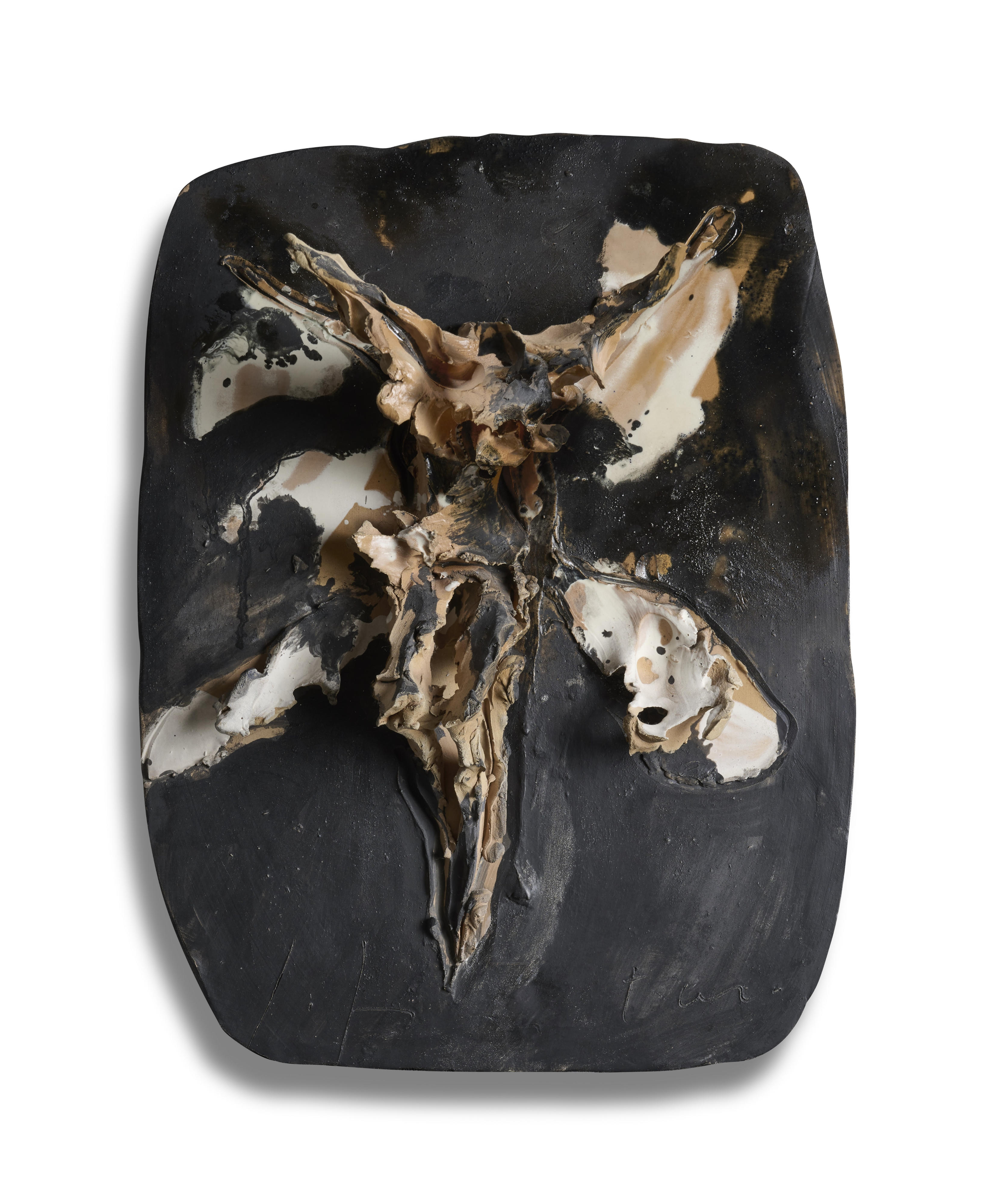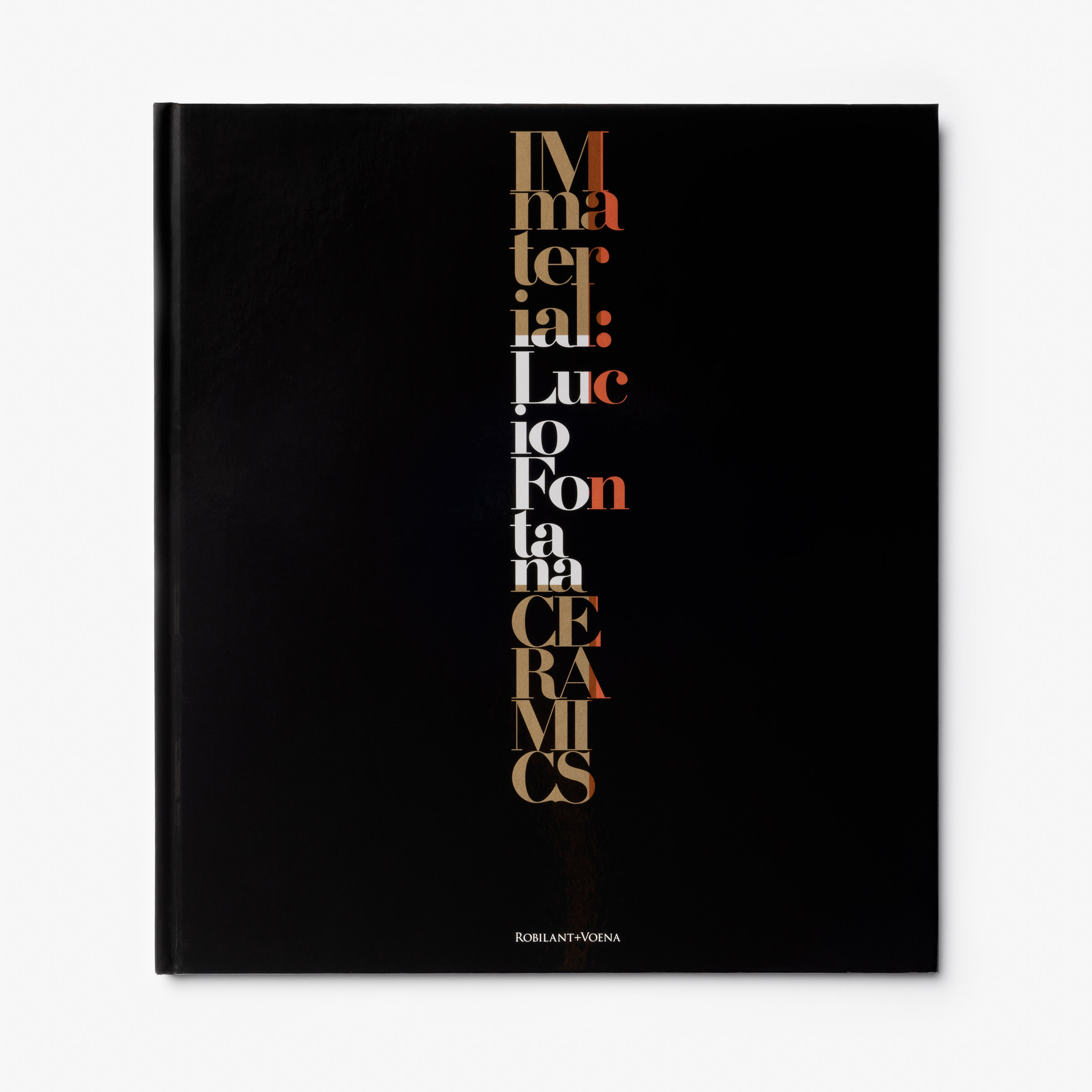Lucio Fontana
b. 1899, Rosario de Santa Fé, Argentina
d. 1968, Comabbio, Italy
Crucifixion
1950–55
Painted ceramic
39 x 30 cm (15 3/8 x 11 3/4 in.)
Provenance
with Galleria d’Arte Medusa, Milan;
Private Collection, Milan, until 2018.
Private Collection, Milan, until 2018.
Literature
E. Crispolti, L'Avventura Spaziale di Lucio Fontana, exh. cat. Galleria d’Arte Medusa, Milan, 1974, p. 22 (illustrated).
A. Coliva, Lucio Fontana: terra e oro, exh. cat. Galleria Borghese, Rome, 2019, pp. 102–3.
P. Campiglio, IMmaterial: Lucio Fontana CERAMICS, London, 2019, n.p., no. 13 (illustrated).
A. Coliva, Lucio Fontana: terra e oro, exh. cat. Galleria Borghese, Rome, 2019, pp. 102–3.
P. Campiglio, IMmaterial: Lucio Fontana CERAMICS, London, 2019, n.p., no. 13 (illustrated).
Description
Gestural, dynamic and dramatic, this powerful, dark, tempestuous Crucifixion reflects Lucio Fontana’s fascination with the Italian Baroque. For Fontana, Baroque art represented space with unsurpassed magnificence; painted figures seemed to abandon the flat surface of the canvas, reaching into our own space. Vigorously modelling and moulding the wet clay, Fontana created a highly textured, tactile, and multi-faceted work whose protrusions and cavities coalesce and integrate with the surrounding space. Neither painting nor sculpture, it is, instead, pure form.
Baroque art played a significant role in Fontana’s philosophy and oeuvre. Between 1953 and 1957, he created a series of Barocchi (Baroques), paintings which unite ideas and techniques of seventeenth-century art with a futuristic exploration of space. Their narrative use of colour and extremes of light and shadow evokes historical Italian precedents, in particular the dramatic chiaroscuro of Caravaggio, which can likewise be found in the present work. Fontana once noted the role the Baroque played in stirring his vision for an artistic revolution: “A change is necessary both in essence and form. It is necessary to overturn and transform painting, sculpture, and poetry. A form of art is now demanded which is based on the necessity of this new vision. The baroque has guided us in this direction, in all its as yet unsurpassed grandeur, where the plastic form is inseparable from the notion of time, the images appear to abandon the plane and continue into space the movements they suggest. This conception arose from man’s new idea of the existence of things; the physics of that period reveal for the first time the nature of dynamics. It is established that movement is an essential condition of matter as a beginning of the conception of the universe…” (quoted in Lucio Fontana: Venice/New York, exh. cat. Solomon R. Guggenheim Museum, New York, 2006, p. 229). Thus, with the present Crucifixion, Fontana expresses, excavates, and celebrates the very foundations of his artistic ambitions.
Please note that the price and availability of this work may be subject to changes with prior notice. Where applicable ARR will be added.
Baroque art played a significant role in Fontana’s philosophy and oeuvre. Between 1953 and 1957, he created a series of Barocchi (Baroques), paintings which unite ideas and techniques of seventeenth-century art with a futuristic exploration of space. Their narrative use of colour and extremes of light and shadow evokes historical Italian precedents, in particular the dramatic chiaroscuro of Caravaggio, which can likewise be found in the present work. Fontana once noted the role the Baroque played in stirring his vision for an artistic revolution: “A change is necessary both in essence and form. It is necessary to overturn and transform painting, sculpture, and poetry. A form of art is now demanded which is based on the necessity of this new vision. The baroque has guided us in this direction, in all its as yet unsurpassed grandeur, where the plastic form is inseparable from the notion of time, the images appear to abandon the plane and continue into space the movements they suggest. This conception arose from man’s new idea of the existence of things; the physics of that period reveal for the first time the nature of dynamics. It is established that movement is an essential condition of matter as a beginning of the conception of the universe…” (quoted in Lucio Fontana: Venice/New York, exh. cat. Solomon R. Guggenheim Museum, New York, 2006, p. 229). Thus, with the present Crucifixion, Fontana expresses, excavates, and celebrates the very foundations of his artistic ambitions.
Please note that the price and availability of this work may be subject to changes with prior notice. Where applicable ARR will be added.








